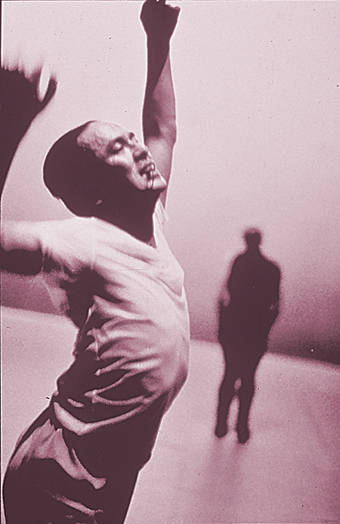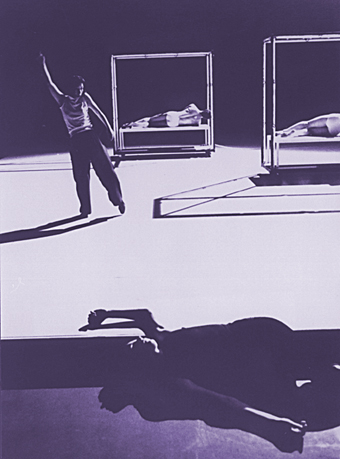Sacred documents
Linda Marie Walker: I Was Real–Documents, Saburo Teshigawara & KARAS

Saburo Teshigawara, I Was Real–Documents
photo Dominik Mentzas
Saburo Teshigawara, I Was Real–Documents
Why do people begin to cough during silences; do they wait for silence. Why do they want to be heard; are they really coughing. No wonder Saburo Teshigawara includes coughing in this work, I Was Real– Documents. It does define a space, small and sudden, where others can’t be. It marks terrain, which is communal, and yet exclusive, like the “sshh” does.
I was a little anxious about seeing this show. I’d seen it in London and loved it. Here it was even better. I was closer for one thing. But, there was something else, something extra that is difficult to describe: perhaps ‘tougher’ hints at it. Something that defied exhaustion, or passed borders, or dissolved desires.
The work is composed of several distinct parts or movements (like music), which flow into one another. These are bracketed by a beginning which is dark and slow, and an ending which is light, brief, and strangely, falsely, idyllic. Teshigawara uses air, air as material, to make space come about for the body, sculpting it with a relentless and often frantic style of dance that is so full of detail and nuance that it saturates the gaze. Looking changes as one understands that ‘air’ cannot be owned, that it, here translated into ‘moving’, is free. Space itself dances; breath is the material of the constant present and the tense and tension of this fact, as force, creates the next moment (or gives it reason to arrive, as ‘thing’, new and surprising). The bodies of the dancers are distinct and alone on the stage. There is only one time when they touch each other, and then it’s as if, in brief closeness, they establish separation by voice, by calling, screaming. In this particular movement or ‘document’, where the voice is amplified, and at once beautiful and painful, it’s clear that every cell of the body holds memory, and as the body pushes its limits, by repetition and commitment to detail—that in some sense is only the extraordinary possibility of every lived second—the idea of air and breath is put into doubt. I mean, the idea of what each is, as space and time, as language, is questioned. These ‘documents’, as they are shown, side by side, are themselves archives, and are, overall, from another larger archive. Each body, in its isolation, in its knowledge of being only itself, carves a world that is complex, abstract, and delicate.

Saburo Teshigawara & KARAS, I Was Real–Documents
photo Dominik Mentzas
Saburo Teshigawara & KARAS, I Was Real–Documents
Teshigawara himself, dressed in white and then black, is compelling; he draws one directly into the dance, to where he is, into his bare fluid aesthetic, into the body he makes for you. Emio Greco is stunning, I hope I don’t have to wait another 12 months to watch him dance again.
Perhaps seeing Documents in the Playhouse, where I was closer to the dancers, made them more ‘real’ and intense. And the experience was overwhelming. I’ve hardly touched the surface of the work, I’ve not mentioned the sound, which is a dimension in its own right, or the costumes, or the projections, or the…
These ‘documents’ pay respect to what it is to be human and to remember and to breathe; and this ‘is’ makes nonsense of wanting to re-define the word ‘sacred’, of wanting to loosen it a little here and tighten it a little there. It too ‘is’.
I Was Real–Documents, Saburo Teshigawara & KARAS; Playhouse, March 11, Adelaide Festival 2000
RealTime issue #24 April-May 1998 pg. 8






